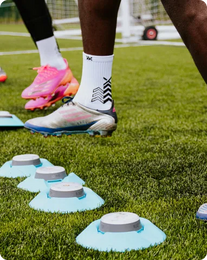Physical therapy plays a crucial role in many of our lives. Whether you’re an athlete, recovering from an injury, or training to be a physical therapist, nearly everyone encounters some form of rehabilitation at some point.

Physical therapy rehabilitation is as thorough as it is complex, and for a bubble term like physical therapy; it covers an enormous scope of fields.
If you’re wondering how to speed up injury recovery, keep reading to learn more about physical therapy and how it can help you achieve your goals.

Purpose of Therapy
Physical therapists aims to restore, maintain, and enhance physical function and mobility. For those recovering from injuries, managing chronic conditions, or seeking to improve overall physical health, physical therapy rehab is essential.
By addressing the underlying causes of physical impairments, physical therapy helps individuals achieve better movement efficiency, enhance their quality of life, and promote long-term health and wellness.
Chronic Pain Management
Physical therapy for chronic pain focuses on reducing pain, improving function, and enhancing quality of life for those with long-standing pain conditions. Through tailored exercises, manual therapy, and education, physical therapists help manage pain by strengthening muscles, improving flexibility, and promoting proper body mechanics.
This approach breaks the pain cycle and empowers patients to engage in daily activities with reduced discomfort.
Sports Injuries
Getting back to an athlete's passion can be daunting if they have suffered an injury and are terrified of repeating the mistake or worsening the existing injury. That’s why physical therapists that focus on sports injuries are integral in speeding up recovery, restoring function, and preventing future injuries to athletes.

When it comes to returning to play for athletes, the rehabilitation process focuses on reducing pain and inflammation, restoring strength and flexibility, and improving coordination and balance.
By customizing treatment plans to each athlete’s sport and their injury, physical therapyhelps athletes regain optimal performance levels safely and efficiently.
Neurological Conditions
In essence, all of our ultimate goals are to improve quality of life and, when someone is suffering and unable to live life to their fullest, neurological physical therapists are focused on improving their ability to function and be independent.
Neurological physical therapy aims to improve the independence for individuals suffering from neurological degenerative conditions, such as strokes, multiple sclerosis, or Parkinson’s disease.
Through personalized exercise programs, balance training, and neuromuscular re-education, physical therapistswork to restore motor skills, coordination, and strength, enabling patients to live more independently.
Post-Surgical Rehabilitation
Post-surgical physical therapy focuses on getting patients back on their feet after surgery. It aims to restore function, alleviate pain, and speed up healing by boosting circulation, minimizing scar tissue, and preventing complications like stiffness or muscle loss.
Education on proper movement techniques and self-care practices supports long-term recovery and prevents re-injury.
Types of Therapy
Physical therapists offer a range of approaches to address various conditions and improve overall well-being. Each type of therapy is carefully chosen to match the patient’s condition, ensuring they receive the most suitable treatment plan for their needs.
Manual Therapy
Manual therapy is a hands-on approach used by physical therapiststo alleviate pain and improve mobility.
This technique involves skilled manipulation of muscles, joints, and soft tissues to enhance function and reduce discomfort. Techniques such as massage, joint mobilization, and myofascial release are commonly employed.

From manual treatments, patients often experience immediate relief and improved movement, but it may not make manual therapy a popular choice for those suffering from chronic pain, sports injuries, or post-surgical recovery.
Exercise Therapy
Exercise therapy is a cornerstone of physical therapy, focusing on using physical activity to restore health and function. Tailored exercise programs are designed to improve strength, flexibility, and endurance.
These programs can range from simple stretching routines to complex strength training regimens, depending on the patient’s condition and goals. Exercise therapy helps in managing chronic diseases, recovering from injuries, and preventing future health issues.
Engaging in exercise therapy can lead to significant improvements in mobility, pain levels, and quality of life.
BlazePod as a Source of Exercise Therapy
BlazePod is an exceptional tool for exercise therapy, integrating cognitive and physical training to enhance overall performance and rehabilitation outcomes. The system uses interactive light-based drills that are not only engaging but also scientifically designed to improve reaction time, coordination, and mental agility.

By stimulating both the brain and body simultaneously, BlazePod helps users develop better spatial awareness, and refine their ability to react swiftly and accurately to various stimuli. This dual approach is particularly beneficial for those undergoing physical rehabilitation, as it addresses both the mental and physical aspects of recovery.

BlazePod’s customizable workouts make it suitable for a wide range of therapeutic needs. Whether recovering from an injury, managing a chronic condition, or enhancing athletic performance, the Pods and app offer tailored exercises that can be adjusted to the user’s specific requirements and progress. The system provides real-time feedback and data-backed insights, allowing therapists and users to track improvements accurately and make necessary adjustments to the therapy plan.
Vestibular Rehab
Vestibular therapy is a type of physical therapy that helps people who have problems with balance and dizziness. It’s important because it helps treat symptoms like dizziness, vertigo, and balance issues by training the brain to better understand signals from the inner ear. Through specific exercises, this therapy improves stability, reduces the chance of falls, and enhances overall quality of life for those affected.
Therapeutic Exercises
Therapeutic exercises are structured physical activities specifically designed to restore and enhance physical function. They often include a combination of stretching, strengthening, and aerobic activities.
The goal is to improve flexibility, strength, and cardiovascular fitness while promoting optimal movement patterns. Therapeutic exercises are crucial in rehabilitation, helping patients regain independence and perform daily activities with ease.
They are a proactive way to manage pain, prevent injury, and ensure long-term health benefits, making them an essential part of any physical therapy program.
Benefits of Physical Therapy Rehab
Physical therapy rehabilitation offers a multitude of benefits that go beyond mere recovery from injury. It plays a pivotal role in enhancing mobility, reducing pain, managing injuries, and even slowing the aging process.
The integration of advanced techniques and personalized care makes physical therapists a cornerstone in the journey toward optimal physical health.
Mobility
Improving mobility is a core focus of physical therapy rehabilitation. By addressing issues such as joint stiffness, muscle weakness, and impaired coordination, physical therapistshelp patients regain their range of motion and functional abilities.

Techniques such as stretching, strengthening exercises, and manual therapy work together to enhance flexibility and ease of movement. This is particularly beneficial for individuals recovering from surgery, injury, or those managing chronic conditions.
Pain Reduction
One of the primary goals of physical therapy is to alleviate pain.
Through a combination of manual therapy and targeted exercises, physical therapists can address the underlying causes of pain. Techniques such as joint mobilization, soft tissue manipulation, and specific exercise programs help to reduce inflammation, improve circulation, and release tension.
Patients often experience significant reductions in pain, leading to enhanced comfort and improved functionality in their daily lives.
Manage Injury
Whether an injury originates from sport, strains or accidents, physical therapy is crucial for managing injuries effectively.
Through rehabilitation that is personalized to each patient, physical therapists focus on promoting healing, restoring strength, and preventing re-injury.

By addressing the root cause of the injury and implementing a comprehensive treatment plan, physical therapy helps individuals recover more quickly and return to their normal activities with confidence and reduced risk of recurrence.
Slowing Aging
While we can’t stop aging, physical therapy plays an important role in slowing the physical aspects of aging. As we age, maintaining mobility, strength, and balance becomes both increasingly more difficult and more important to prevent falls and maintain independence.
Generally, physical therapists are able to use targeted exercises to enhance muscle strength, joint flexibility, and coordination.

Regular physical therapists can prevent the age-related conditions such as arthritis and osteoporosis from getting unmanageable, enabling seniors to stay active and healthy. The preventative approach not only improves physical health but also enhances mental well-being, contributing to a higher quality of life in the later years.
Conclusion
Physical therapists goes beyond pain relief;they aim to restore mobility, manage injuries, and promote long-term health.
By focusing on both immediate and preventive care, physical therapy generally helps individuals lead more active, pain-free lives, significantly boosting their quality of life.
Embrace physical therapy to achieve optimal health and peak performance.























